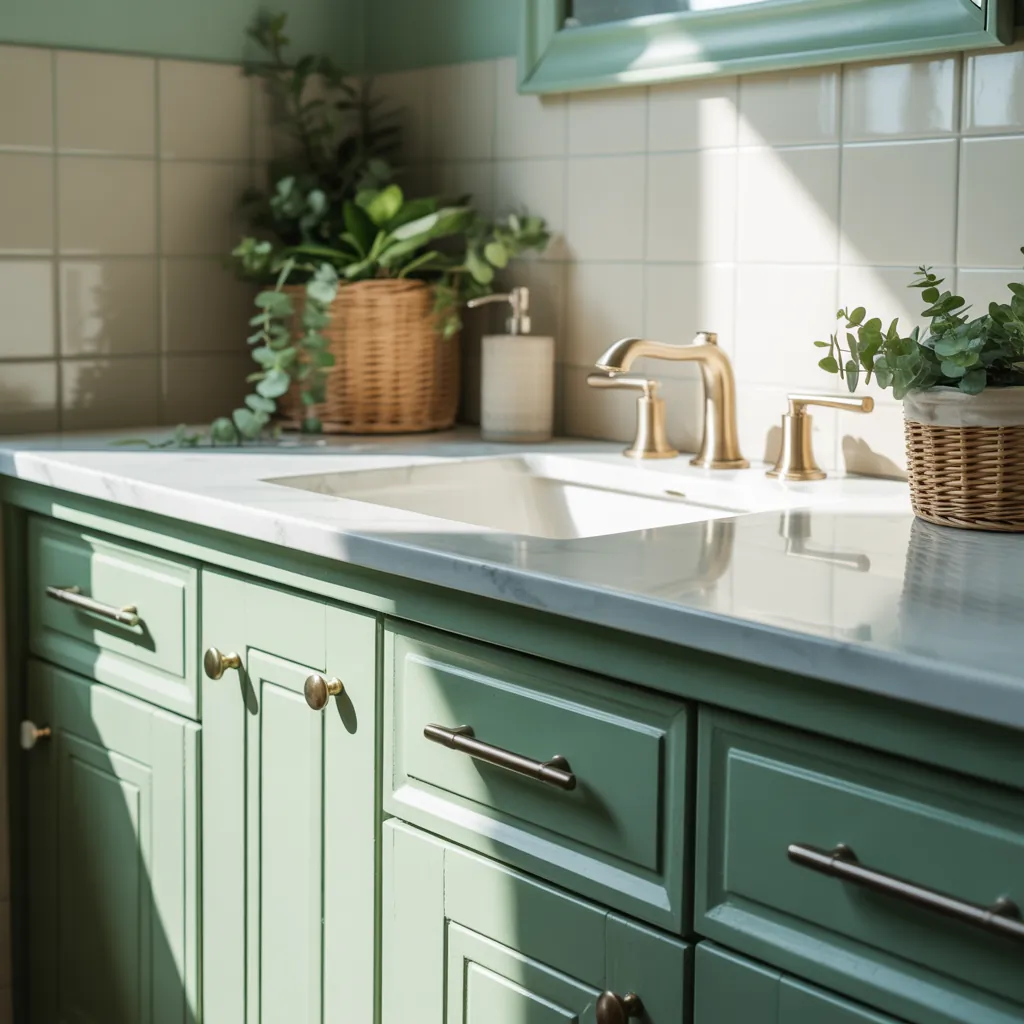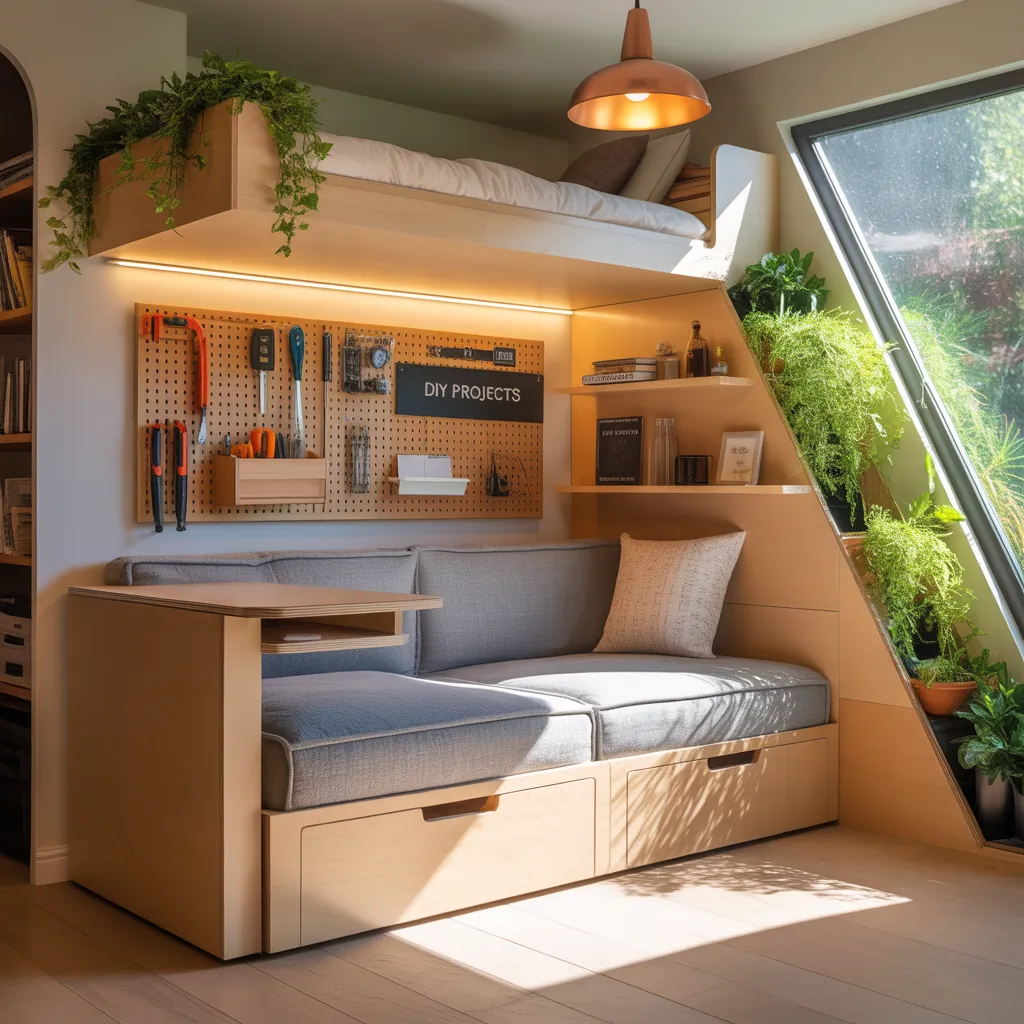Have you ever stood in your bathroom, coffee in hand, imagining a calm, spa-like space but felt stuck because the vanity looks dated and expensive to replace? You’re not alone. Transforming a tired cabinet into a focal point using sage tones is one of the most rewarding, budget-friendly home improvement moves you can make. In this guide you’ll get practical step-by-step tips, design inspiration, and real-world advice to bring peaceful sage bathroom vanity green ideas into your own home.
Why choose sage? The color that balances style and serenity
Sage green is a muted, grayish-green that reads as both modern and timeless. It pairs easily with warm woods, brass fixtures, marble countertops, and matte black accents. Whether you want a cozy farmhouse bath, a mid-century modern powder room, or a coastal-inspired ensuite, sage provides a versatile base color that elevates small and large spaces alike.
Quick design directions: styles that work with a sage vanity
- Modern farmhouse: Sage base with a walnut countertop, matte black hardware, and subway tile backsplash.
- Mid-century modern: Sleek floating vanity painted sage, tapered legs, vintage brass pulls, and round mirror.
- Coastal retreat: Sage with white quartz, woven baskets, and rattan-framed mirror for texture.
- Boho spa: Sage cabinet, warm wood shelves, plants, and patterned tile floor.
Step-by-step DIY painting guide (Weekend makeover)
One of the easiest ways to get the sage bathroom vanity look is to paint your existing cabinet. Here’s a practical weekend plan.
Materials and tools
- Degreaser and clean rags
- Sandpaper (120 and 220 grit) or an orbital sander
- High-quality bonding primer
- Acrylic-latex or water-based enamel paint in a sage tone (sample first)
- Polycrylic or water-based polyurethane for topcoat
- Paint brushes, foam rollers, painter’s tape
- New hardware (optional)
Steps
- Remove doors, drawers, and hardware. Label pieces so reassembly is easy.
- Clean thoroughly with a degreaser to remove soap scum and oils.
- Lightly sand to scuff the surface; wipe away dust.
- Apply a bonding primer—this prevents peeling and improves adhesion.
- Paint two thin coats of your chosen sage paint, allowing proper dry time between coats.
- Seal with 1–2 coats of polycrylic for durability in a bathroom environment.
- Install new hardware for an instant style update.
Advanced upgrades: beyond paint
If you want to go further, consider these improvements:
- Two-tone vanity: Paint the base sage and leave drawer fronts or top trim in warm wood or crisp white for contrast.
- Countertop swap: Replace laminate with quartz or marble-look surface for a high-end touch.
- Floating vanity conversion: Remove legs and mount the cabinet to the wall for a modern, airy look (requires plumbing adjustments).
- Tiled backsplash: Add penny tile or subway tile behind the sink in complementary hues to highlight the sage vanity.
Sage bathroom vanity green ideas for small spaces
Small bathrooms benefit from light-reflecting surfaces and compact fixtures. Choose a soft sage shade and pair it with a large mirror, warm LED lighting, and open shelving to keep the room airy. Vertical storage and wall-mounted faucets save counter space and keep the painted vanity the room’s feature.
Finishing touches that elevate your sage vanity
It’s the accessories that make the color sing. Try these styling tips:
- Swap basic pulls for matte black or antique brass hardware to create contrast.
- Add a round mirror with a thin brass or wood frame to complement the sage tone.
- Use natural textures—linen towels, woven baskets, and a small potted plant—to build a layered look.
- Match grout color to the overall palette: warm gray grout looks great with sage and white tile.
Real-world advice: budget and timeline
Cost and time vary by scope:
- Paint-only refresh: $50–$300 in materials; 1 weekend.
- Hardware + countertop swap: $300–$1,200; 2–5 days depending on fabrication.
- Full vanity replacement or plumbing changes: $800+; 2–7 days with a contractor.
Tip: Test paint on a drawer front before committing to the whole vanity. Lighting can shift how a sage tone reads in your space.
Sage bathroom vanity green ideas: matching palettes and materials
Pair sage with:
- Warm wood tones (walnut, oak)
- Brass or gold hardware for a luxe feel
- Matte black fixtures for contrast
- White or cream countertops for brightness
Frequently Asked Questions
1. Is sage green a good color for a bathroom vanity?
Yes. Sage green is versatile, calming, and works in many design styles. It conceals water spots better than white and pairs well with both warm and cool finishes.
2. How do I seal a painted vanity to withstand bathroom moisture?
Use a water-based polycrylic or a water-based polyurethane topcoat designed for cabinets. Apply two thin coats, allowing full cure time. Avoid oil-based polyurethanes in light colors as they can amber over time.
3. Can I use chalk paint or milk paint for a sage vanity?
Yes. Chalk paint and milk paint adhere well with minimal prep and give a soft, matte look. For durability, add a clear protective topcoat. If you want a smoother, more modern finish, choose a high-quality acrylic-latex enamel instead.
Wrap-up and next steps
Whether you’re tackling a weekend DIY or planning a more ambitious bathroom remodel, sage bathroom vanity green ideas offer a beautiful way to refresh your space without breaking the bank. Start with a small test, pick complementary hardware and lighting, and don’t be afraid to mix textures. Ready to tackle the project? Browse our DIY projects for more step-by-step guides, or check out related home design ideas to expand your renovation plan. Try one sage-inspired update this weekend and see how calming color can transform your bathroom.
Call to action: Share your before-and-after photos or ask for tailored paint recommendations to get personalized advice — I’d love to help you bring your sage vanity vision to life!



